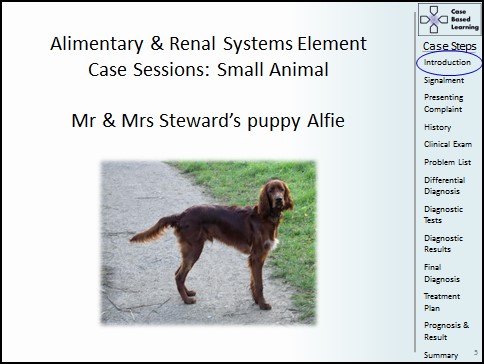
| Theme: 7BB Approaches to teaching and learning | |||
 |
||||||
| Introducing case-based learning in a large group format for a veterinary curriculum |
 |
|||||
|
||||||
The first year veterinary curriculum includes units (modules) in animal health sciences, professional studies and animal management. The aims of case-based learning (CBL) sessions were to demonstrate the relevance of taught material to clinical veterinary practice, integrate the three units in the context of a clinical case and to introduce the concept of a ‘logical approach’ to case management.

Case-based learning was well received and appeared to improve motivation and assist with integration of taught material. Case development involved considerable time commitment, however, adopting widely used software and a large group format overcame resource constraints.
Case-based learning can be successfully designed for a lecture theatre setting using readily available software.
Crowther E, Baillie S 2015. A method of developing and introducing case-based learning to a preclinical veterinary curriculum. Anatomical Sciences Education 05/2015; DOI:10.1002/ase.1530
- A working group agreed case topics (one per species group, per body system).
- Cases were developed by clinicians, basic scientists, and the authors, using a standardised template.
- Each case follows a linear sequence from signalment to prognosis.
- Relevant science, animal management and professionalism included throughout cases.
- Active learning utilised an audience response system, discussions and tasks.
Feedback indicated that students enjoyed the sessions and felt that:
- Cases were at the right level of difficulty.
- Active learning tasks were valuable.
- Case-based learning assisted in integrating first year subjects.
- Clinical context provided motivation for learning.
Free text comments included suggestions for improvements to the case template and further opportunities for interactivity.

We would like to thank Kate Allen, Sonja Fonfara, Cathy Fuller, Max Headley, Frankie MacMillan, Kelly Moule. Ronnie Roberts, David Tisdall, Julie Townsend and Sheena Warman for their invaluable help during the development of the cases, and for facilitating the case sessions.

 Send Email
Send Email